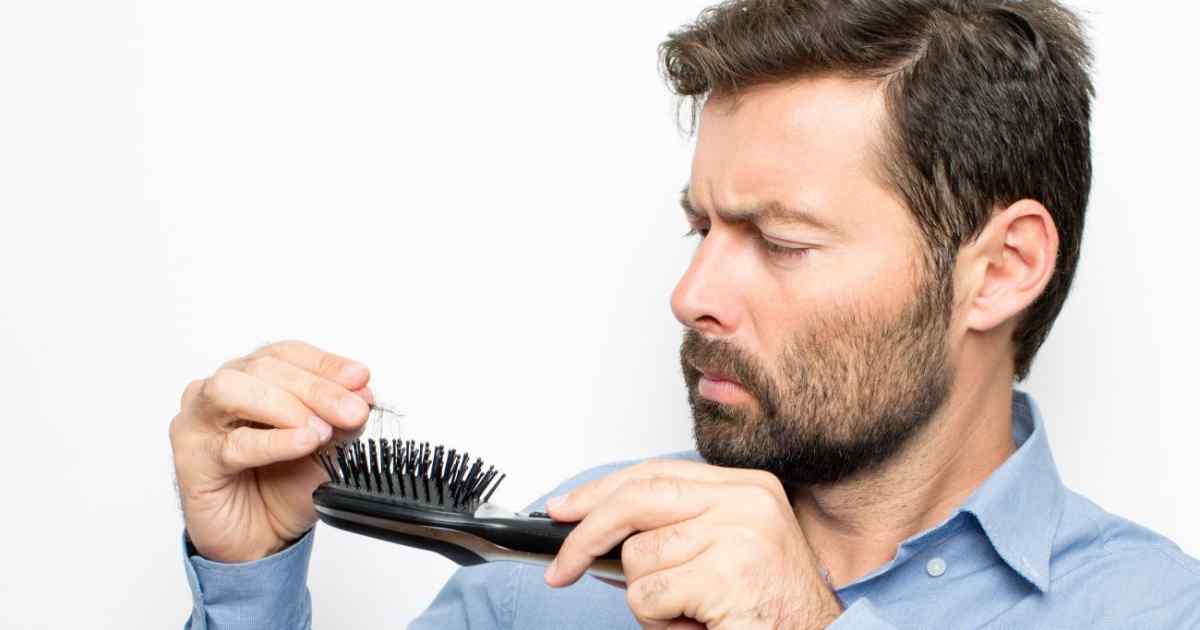Navigating the hair loss treatment options for men can be a dizzying experience, ranging from untested home remedies to expensive surgical procedures. Fortunately, if you start a search online today, you can find proven hair loss treatments.
If you’re losing your hair and want to regain your confidence, there are options. Scientific advancements have led to new treatments and techniques with a proven track record of not just slowing down hair loss, but also promoting new growth.
Male Pattern Baldness
The most common type of hair loss in men is termed “androgenetic alopecia” or male pattern baldness. It is caused by genes and hormones. The pattern starts at the hairline and moves toward the back of the head, forming an “M” shape. As hair becomes shorter and thinner, it develops a “U” shape, resembling a horseshoe.
Shrinking of the hair follicle is the anatomical cause of balding. The follicle is a small cavity in the skin from which each hair strand sprouts. Hair becomes shorter and finer until it eventually stops growing and sheds. However, the follicle remains alive, making regeneration possible. Now let’s take a look at six proven hair loss treatments for men!
1. Platelet-Rich Plasma (PRP)
This procedure has been popularized by golf champion Tiger Woods and pro athlete LeBron James. PRP is a technique that uses one’s blood to stimulate hair growth. Blood is drawn and sent through a centrifuge to extract plasma and platelets. These components contain growth factors that prompt tissue regeneration.
A local anesthetic is applied to the scalp. Tiny channels are created in the scalp to maximize absorption of the PRP. Then injections are applied to the scalp, and the solution is rubbed over the head. The entire procedure takes approximately one hour. It is not considered painful. There are no side effects and no post-therapy down time.
2. Minoxidil
Minoxidil is an over-the-counter topical medication. The most popular brand name is Rogaine. Minoxidil dilates blood vessels, enabling more oxygen and proteins to reach hair follicles and stimulate growth.
The medication must be applied twice a day. The dosage recommended by dermatologists is up to 25 drops of Minoxidil. Improvement may be seen in four months. If treatment is stopped, hair loss will resume after about three months.
3. Propecia
Propecia is a prescription oral medication. It is the lower-dose version of Proscar, a drug used to treat enlarged prostate. Propecia inhibits the production of the male hormone testosterone, which triggers follicular shrinkage. The drug then slows the rate of hair loss. In some men, it reverses hair loss.
The pill is taken once daily. Improvement may be noted after 6-12 months of use. If medication is discontinued, hair loss will resume.
4. Low-Level Laser Therapy (LLLT)
LLLT involves the use of a laser device that emits a visible red light. The therapy is painless and does not cause burning. The light stimulates and repairs damaged follicles. Laser therapy does not re-grow hair, but it does make existing hair thicker and stronger. It also speeds the rate of hair growth.
Maximal results are achieved at two years. If laser use is discontinued, hair loss resumes. There are no side-effects from low-level laser therapy.
5. Follicular Unit Extraction (FUE)
FUE is a procedure where hair follicles are removed from a person’s donor area and transplanted to a thinning area. The follicles are extracted using a small punch and forceps. No stitches are needed, and there is no residual scar.
The length of the procedure depends on the number of grafts performed and ranges from 5-8 hours. The maximum number of grafts that can be done in one session is 2,000. About four months after the surgery, new hair begins to grow. It takes approximately one year for the transplant to fully grow and mature.
6. Follicular Unit Transplantation (FUT)
FUT is also known as the “strip procedure.” It differs from FUE in that a strip of scalp is surgically removed and dissected into individual follicular units. The sections are then transplanted. The donor site remains visible as a pink area for 1-3 months after the procedure. A fine linear scar forms around the back and sides of the head.
FUT is considered the gold standard in hair restoration since it generally results in a better yield and is more affordable than FUE. Larger areas can also be treated than with FUE. The maximum number of grafts that can be done in one session is 3,000.
Making a Decision
To make an informed decision, the best approach is to begin with a doctor visit. A physician can rule out any underlying medical causes.
Online research can also be instrumental in selecting a hair loss procedure that meets your preferences and budget. In no time, you can be enjoying a full head of hair again!
